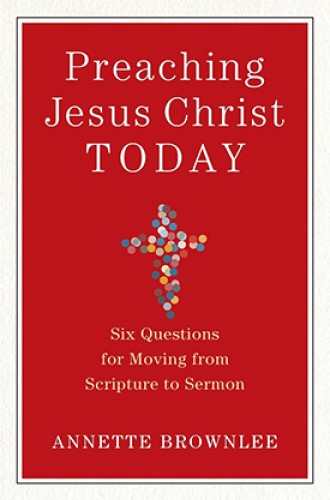Dwelling together in scripture’s room
How can preachers and listeners develop a practice of lingering with the text?
Is preparing to preach a weekly chore or transformative practice? Annette Brownlee insists it is a key spiritual practice with the potential to form and transform preachers, congregations, and broader communities. In conversation with Augustine’s On Christian Teaching, Brownlee identifies this practice as integral to the pastoral vocation of binding oneself to God’s people and God’s Word for the sake of God’s world. Such binding nurtures an appreciation for “the other” that is likely to transform preachers and their communities.
Brownlee notes the relationship between persevering with challenging aspects of scripture and loving those within our congregations and communities, difficult as they may be at times. “The art of attentively reading the strange, sometimes difficult words of Scripture is similar to the ability to love our neighbor across the chasm of difference and offense.”
Read our latest issue or browse back issues.
Living out such attentiveness and love is integral to the vocation of the church as a light to the world. Brownlee reminds us that while the public role of the church may be shrinking within the West, its vocation to be a light to the world has not been eclipsed. The congregation learning to read scripture theologically contributes to this vocation. One way in which such reading is developed is through sermons that are theologically sound while also attentive to the world of the text.
Brownlee advocates for sermon preparation that is grounded in the attentive reading of, and listening to, scripture. Preachers may be tempted to turn away from the text of scripture, toward doctrine, pietism, or moral exhortation. This makes for unstable sermons and misshapen communities.
Disciplined attentiveness to the text requires significant time in what Brownlee describes as “scripture’s room,” rather than glancing around and then walking to the closest exit to search out meaning. The preacher needs both confidence and skill as she listens to scripture, recognizes the active agent within a text, and develops life-giving sermons based on such listening. As the preacher lingers in scripture’s room, she begins to listen with and on behalf of her people.
Brownlee speaks of the weekly rhythm of sermon preparation, but the attentiveness she advocates may be best honed by living within the room of a particular text over a prolonged period of time. One strategy for prolonged dwelling in the text is the three-year rhythm suggested by Darrell Johnson: a biblical book is read devotionally one year, studied exegetically another year, and explored homiletically within a third.
Brownlee’s book is implicitly a work of spirituality, encouraging a way of life characterized by attentiveness to how the Spirit wants to speak through scripture.
While Brownlee encourages the use of a variety of interpretive methods, she emphasizes an intratextual approach. Such an approach invites movement between texts and Testaments, exploring ways in which one text may reference another, whether as simile, parody, or presupposition. Thus the silence of the rich man, in response to Jesus’ command to sell his possessions and give to the poor, provides insight into the speechlessness of the poorly clothed wedding guest, and into the challenges of others (as well as ourselves) in responding to God’s call.
More specifically, Brownlee advocates for a figural approach, whereby such connections are attributed to divine intentionality, with various “types and shadows” finding their fulfillment in Jesus Christ. Thus the silence of the wedding guest and the rich man are identified as finding their fulfillment in Christ’s redemptive silence. Such theological readings of the text have the potential to be both perceptive and powerful. Yet it takes skill and discernment to use such approaches in ways that are congruent with the text and theologically appropriate.
Throughout the book, Brownlee presents listening to scripture as a collaborative act, noting that it is the privilege of pastors to practice such listening alongside their congregations. I am inspired by her emphasis on a communal hermeneutic—through which congregations learn to listen, interpret, and respond together—and would love to see this further explored. What does a communal hermeneutic look like? How are challenges to it overcome? What happens when certain congregants, possibly with distorted understandings of God and of scripture, monopolize the process? How can the preacher continue to foster discernment so that the community truly does become a listening community, poised to hear God’s voice along with the voices of others within their community?
While figuring out the how-to of such listening remains the task of specific pastors and communities, Brownlee clearly anticipates that the six questions that structure her chapters guide this process. The first two questions concern the preacher as witness: What and whom do I see? The following three questions focus on Christ’s word to the preacher, to the congregation, and about the congregation. The final question seeks to flesh out what this process may look like in terms of weekly rhythms and the function of stories.
These questions provide a helpful framework for making a collaborative spiritual practice. They encourage preachers in the challenging tasks of learning to listen and love across divides. And such listening and love may bring healing and transformation to fractured communities.







